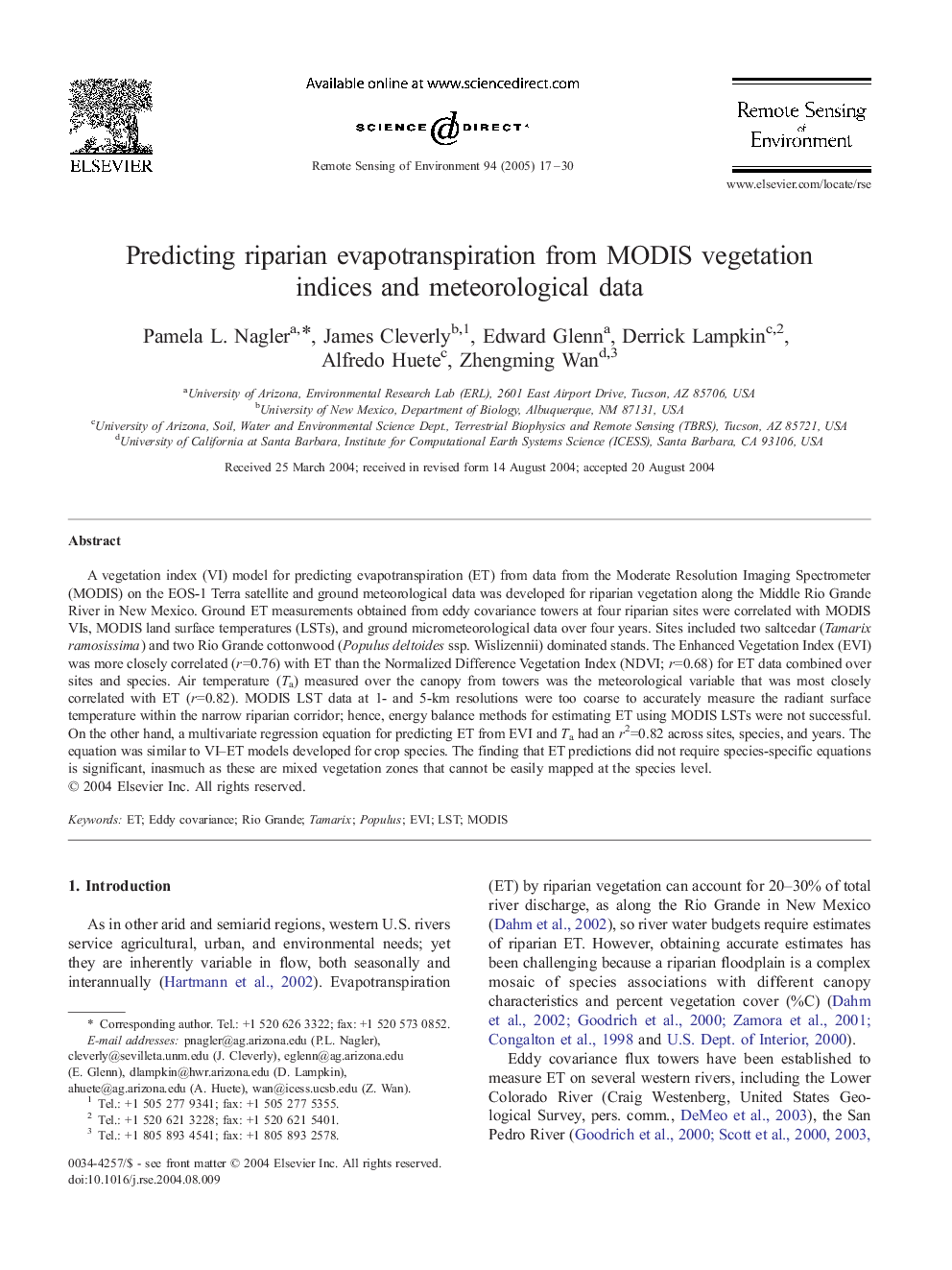| Article ID | Journal | Published Year | Pages | File Type |
|---|---|---|---|---|
| 10114361 | Remote Sensing of Environment | 2005 | 14 Pages |
Abstract
A vegetation index (VI) model for predicting evapotranspiration (ET) from data from the Moderate Resolution Imaging Spectrometer (MODIS) on the EOS-1 Terra satellite and ground meteorological data was developed for riparian vegetation along the Middle Rio Grande River in New Mexico. Ground ET measurements obtained from eddy covariance towers at four riparian sites were correlated with MODIS VIs, MODIS land surface temperatures (LSTs), and ground micrometeorological data over four years. Sites included two saltcedar (Tamarix ramosissima) and two Rio Grande cottonwood (Populus deltoides ssp. Wislizennii) dominated stands. The Enhanced Vegetation Index (EVI) was more closely correlated (r=0.76) with ET than the Normalized Difference Vegetation Index (NDVI; r=0.68) for ET data combined over sites and species. Air temperature (Ta) measured over the canopy from towers was the meteorological variable that was most closely correlated with ET (r=0.82). MODIS LST data at 1- and 5-km resolutions were too coarse to accurately measure the radiant surface temperature within the narrow riparian corridor; hence, energy balance methods for estimating ET using MODIS LSTs were not successful. On the other hand, a multivariate regression equation for predicting ET from EVI and Ta had an r2=0.82 across sites, species, and years. The equation was similar to VI-ET models developed for crop species. The finding that ET predictions did not require species-specific equations is significant, inasmuch as these are mixed vegetation zones that cannot be easily mapped at the species level.
Related Topics
Physical Sciences and Engineering
Earth and Planetary Sciences
Computers in Earth Sciences
Authors
Pamela L. Nagler, James Cleverly, Edward Glenn, Derrick Lampkin, Alfredo Huete, Zhengming Wan,
